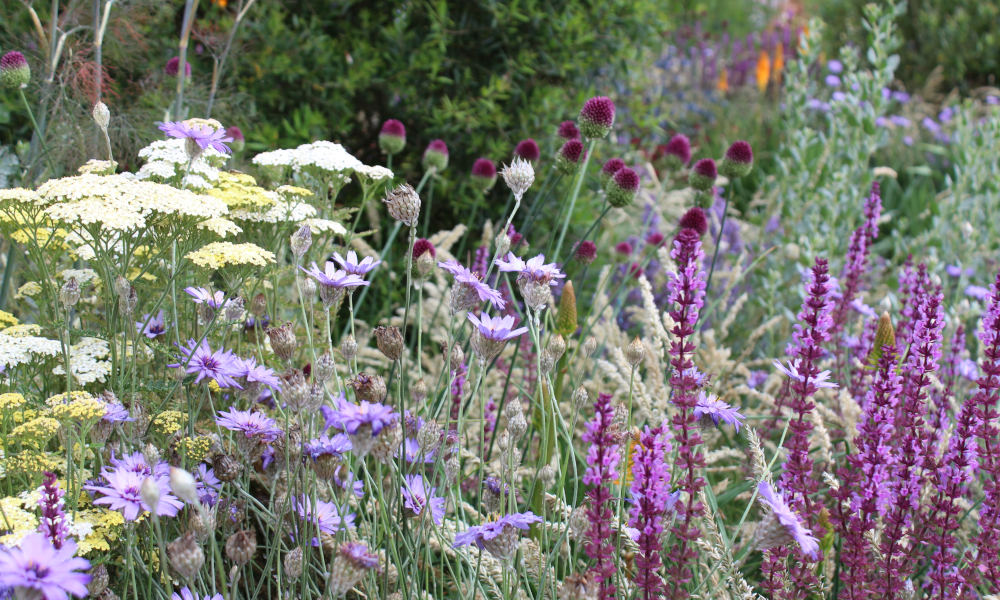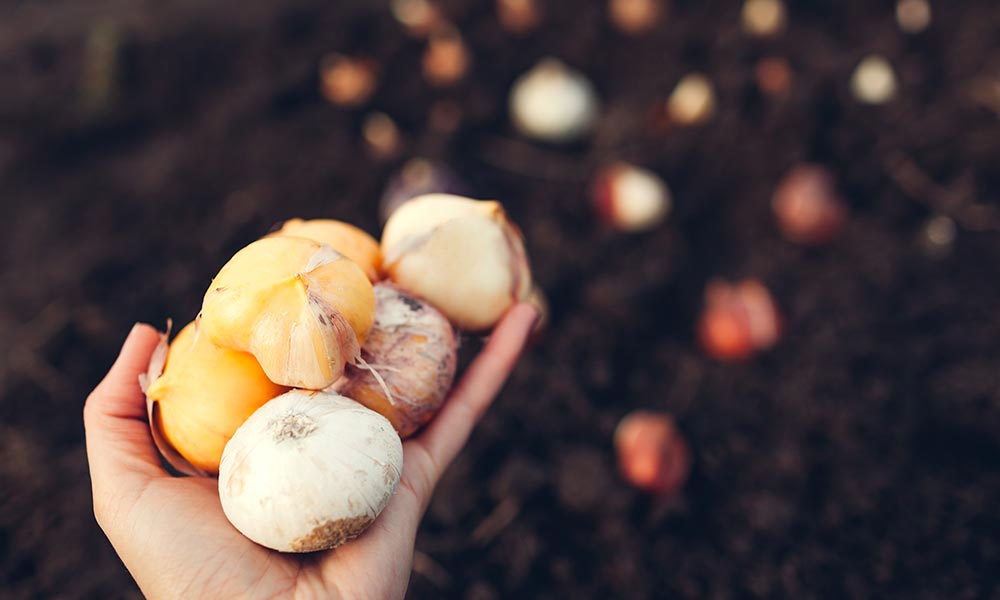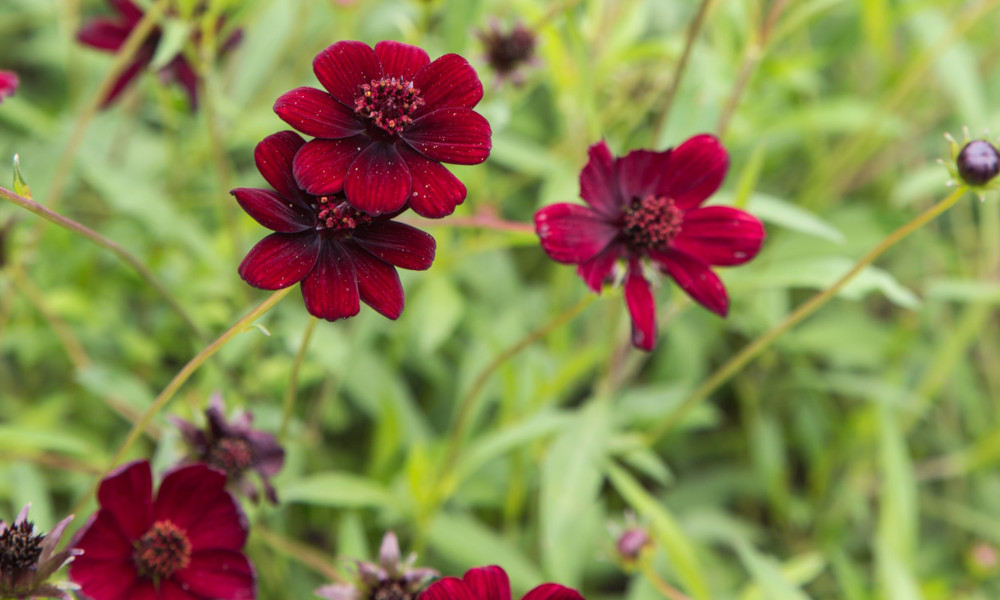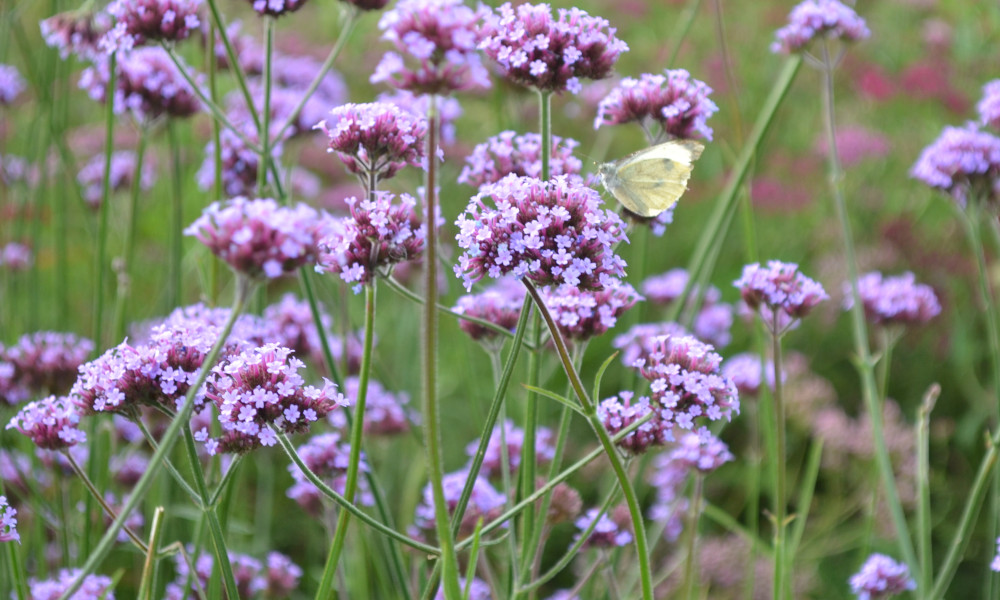Gardening Jobs for August
Gardening Jobs for August

The August garden might be ablaze with colour, but it is also the month to plan for next year, and to keep on top of all those ‘little and often’ jobs.
Checklist
Ordering bulbs
Deadhead plants, save ripe seeds from annuals, prune early blooming perennials
Plant out young biennial plants
Take cuttings from tender perennials
Keep on top of weeding
Bulbs
It might feel strange to start thinking about spring and planting bulbs right now, but organisation is the key to a full and thriving garden. So, immerse yourself in those beautiful bulb catalogues and enjoy taking some time now to plan your spring garden. By ordering your bulbs in summer you will have the pick of the bunch before all the popular and new varieties have sold out! You can find our fabulous bulb collection here. Your bulbs will not be sent out until it is time to start planting in autumn, so no need to worry about receiving them too early and having to store them.

Deadhead plants, save ripe seeds from annuals, prune early blooming perennials
August is a good time to start thinking about any plants you might like to add to your garden for next year too, perhaps something special caught your eye during a garden visit, on TV, or social media? Maybe you have noticed a few gaps in the borders which could benefit from added colour and texture next year?
Many hardy plants can be purchased as plugs, or young plants and planted out in autumn to give them a head start for spring. We have a great selection of young annual, biennial, and perennial plants which can be purchased now, and planted out over the next few weeks.
Plants which started to bloom earlier in summer may be starting to look a little tired by now, but if you keep on top of deadheading, and increase your feeding regimen they may well revive and reinvigorate. Feed at least once a week with liquid fertiliser such as seaweed or comfrey feed – this will help them to stay perky and pushing out blooms. Some of the annuals such as Cornflowers and Nigella may be completely exhausted and can be removed and composted now. If you like to bring the garden inside your home then, perhaps, keep your Nigella seed-heads for adding to autumn or winter decorations. It is also beneficial to save ripe seed from annuals on a dry day in a labelled envelope for sowing later on, and make sure you deadhead plants the plants that you do not want re-seeding in the garden before the seed heads mature. Early blooming perennials such as Alchemilla Mollis, Geums, and Hardy Geraniums can be pruned right back to tidy them up and, perhaps, promote another flush of flowers.
Plant Out Young Biennial Plants
If you have young biennial plants like Foxgloves, Hesperis, Sweet William, Wallflowers, Aquilegia, and Hollyhocks, then these can all be planted out from the end of this month into the spaces left behind from annuals, or elsewhere in your garden whilst the earth is still warm. They will then continue to put down roots over autumn, with slower growth over winter, before bursting into life from late spring next year. Biennials are valuable plants which often fill the gap in May and June after the spring flowers have finished their glorious show, but before the summer garden breaks into life.
Dahlias and Cosmos, which started to bloom last month will be dazzling in the borders and pots in August, adding colour and cheer right through summer and autumn until we have the first winter frosts. Keep on top of deadheading, or better still picking, and these plants will reward you for months with armfuls of flowers. A regular liquid feed will keep Dahlias happy and blooming profusely, along with regular watering during dry spells. Make sure you tie Dahlias into their supports at this point too as they grow most rapidly during August.

Take cuttings from tender perennials
Salvias, Penstemon, Echinacea, Achillea, and Ornamental grasses will all be thriving in the summer heat and will only need watering during prolonged dry periods. These plants also do not require feeding and are therefore generally trouble-free, easy to grow perennials. The combination of Echinacea and Grasses look fabulous in the garden even into winter – especially when the textural seed heads are touched with frost.
August is also the perfect time for taking cuttings from tender perennials such as Fuchsias, Verbenas, and Pelargoniums. These plants originate from warmer climates and do not survive our chilly winters without protection. By propagating, you will ensure you have plants for next year and increase your stock for the garden, or to share with friends and family. To do this, use a sharp knife to remove non-flowering shoots approximately 10cm long, just below a leaf node. Remove the tip of the cuttings and the lower pair of leaves. Ideally, do this in the morning when your plants are well hydrated. Dip the bottom of the cuttings in hormone rooting powder and pot them immediately into a small pot of compost with added perlite or grit. You can place several cuttings around the edge of each pot as long as they are not touching one another. Water the pot and place it on a windowsill, or in a cold frame/greenhouse where you should keep it well hydrated until you can see roots appear at the bottom of the pot. The cuttings can then be moved into individual pots and grown undercover before planting outside next year after the final frosts.

Keep on top of weeding
Try to keep on top of weeding - this is easier if you hoe smaller annual weeds during dry weather and pull or dig out deeper rooted weeds like Dandelions, Thistles, and Docks after a spell of wet weather.
Continue to water, feed, and of course enjoy harvesting vegetables. For those grown undercover such as Tomatoes, Cucumbers, Peppers and Chillies, you may need to water twice a day during hotter weather. Hose down the floor of the greenhouse too as this will keep humidity levels high. Keep an eye on plants which can suffer from mildew like Courgettes and Cucumbers - remove and dispose of any affected leaves and spray your plants with an organic fungicide.

Ideas
And lastly, if you feel your late summer garden is missing a little oomph, then take a look at some of our ‘Top 10’ suggestions where you will find some great ideas for summer containers, perennial plants, plants for fragrance, and autumn flowering plants.






